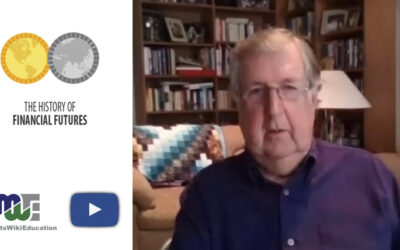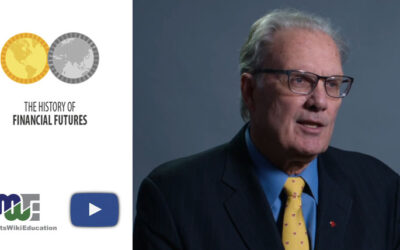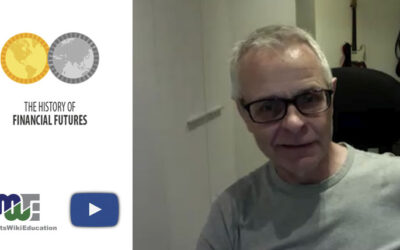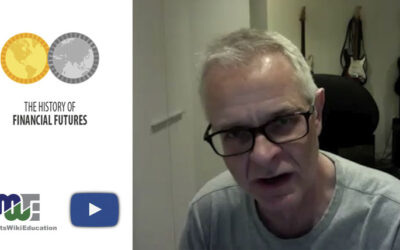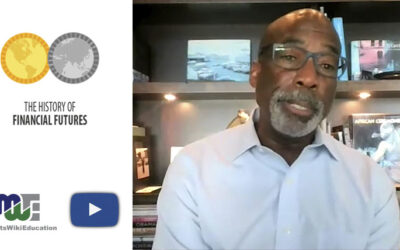Longtime Washington Hand Who Led FIA, Reflects on the Start of CFTC, FIA and NFA as Financial Futures Began
John Damgard spoke in 2019 to John Lothian News for The History of Financial Futures video series, when he was attending the FIA conference in Boca Raton.
John Damgard was a key player in creating the Commodity Futures Trading Commission (CFTC) in the 1970s. Many reasons pointed to the need for a regulator with greater capabilities than those of the Department of Agriculture, which had meager resources available for overseeing the agricultural futures of the day.
In the beginning the impetus was the exchanges, Damgard said, citing the salad oil scandal and the case of Billy Sol Estes, a friend of President Lyndon Johnson. The exchanges were powerful, he said, and not accustomed to being told what to do. The exchanges also were anti-regulation, but the commodity brokerage firms were more flexible about new regulation.
Damgard said the requirement for national registration was not controversial, but choosing the right number of CFTC commissioners was. Damgard argued for three commissioners, saying that any more would be a burden on taxpayers. John V. Rainbolt, who was associate counsel for the House Agriculture Committee, is credited with writing the Commodity Futures Act of 1974. He wanted to be one of the commissioners, Damgard said, but Rainbolt was not sure he would get a position if the law had just three spots. When the act was finalized into law, it had five commissioners.
Damgard describes that the first chairman of the CFTC, William T. Bagley, was chosen, and then Rainbolt was named a commissioner as well as vice chairman, a role the CFTC no longer has.
The list of politicians who helped the futures industry over the years, Damgard said, includes former Congressmen Dan Rostenkowski, Tom Foley, Michael Madigan and Dan Glickman, and Senators Richard Lugar and Chuck Grassley. Also helpful were Rep. Eligio “Kika” de la Garza II and Sen. Bob Dole.
The Futures Industry Association (FIA) started as the New York Brokers Club, which was basically a social, luncheon organization. John Claggett was the head of the FIA and moved it from New York to Washington. The FIA did not arm-twist Congress but instead brought lawmakers educational programming about the industry, which they valued, Damgard said. The relationship was more about education and building trust.
Some lawmakers did not want staff who were experts in particular subjects, but others allowed staff freedom to develop their interests. Walt Lukken, current president and CEO of the FIA, is an example of a staffer whose interest in the work of his boss, Sen. Richard Lugar, led to a career.
Damgard also spoke about how the National Futures Association (NFA) was founded as a self-regulatory body in response to the desire of the exchanges and member firms to not have a “bigger and more powerful government agency.”
The self-regulatory model, he said, allowed the industry to fund the NFA and gave it authority over who was in charge. Damgard credits Leo Melamed for getting it started.
Melamed figured out a way for the firms to pay for the NFA, Damgard said, noting the exchanges already paid for internal regulatory functions. Melamed also figured out a way to make himself chairman, Damgard said, though he lasted only a few terms before the member firms installed John Conheeney as chairman.
The leadership of the NFA has by and large been very solid, Damgard said, and continues that way today.
The NFA was designed to relieve the CFTC from needing more money, Damgard said. He noted that most of the chairmen were not partisan, however he took exception to Gary Gensler’s chairmanship. Gensler, he said, leaned over backwards to “stick it to Goldman” Sachs, where Gensler was a partner before going into government work.
Damgard also said Gensler would walk away from agreements the FIA had with the CFTC “under the cover of darkness” and give bad advice to the head of the Senate Committee on Agriculture.
Damgard is proud of the way the CFTC has helped foster growth in the futures industry over the years and how Chicago trades more nominal equity value than does New York and how one of “his guys,” Jeff Sprecher, bought the New York Stock Exchange.
Reflecting on the members of Congress who used to come down to Boca, a practice that is now illegal, Damgard said the congressmen would get $1000, a round of golf, and a minute or two to talk to the conference. Some of the congressmen really took an interest, like John Boerner, he said. While others were not helpful, mentioning an Iowa congressman who went to jail for tax avoidance.
Lastly, Damgard reflected on exclusive jurisdiction for the CFTC at the federal level and how that helped the industry avoid duplicative costs and ineffective regulators. He also said that some SEC oldtimers still believe former SEC Chairman John Shad gave away the house when he made the Shad-Johnson accord with the CFTC’s Phil Johnson to allow stock index futures to trade.






